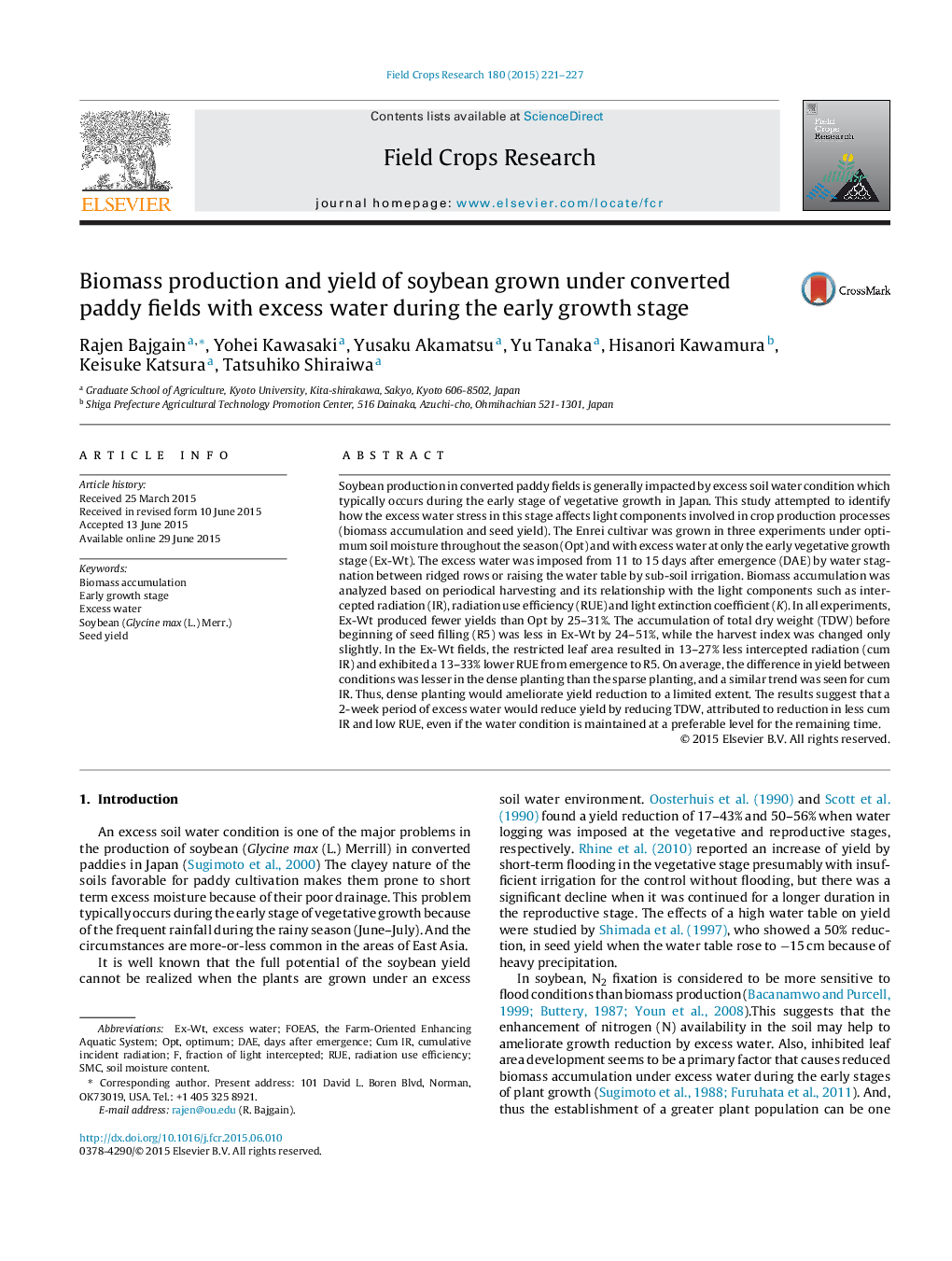| Article ID | Journal | Published Year | Pages | File Type |
|---|---|---|---|---|
| 6374819 | Field Crops Research | 2015 | 7 Pages |
Abstract
Soybean production in converted paddy fields is generally impacted by excess soil water condition which typically occurs during the early stage of vegetative growth in Japan. This study attempted to identify how the excess water stress in this stage affects light components involved in crop production processes (biomass accumulation and seed yield). The Enrei cultivar was grown in three experiments under optimum soil moisture throughout the season (Opt) and with excess water at only the early vegetative growth stage (Ex-Wt). The excess water was imposed from 11 to 15 days after emergence (DAE) by water stagnation between ridged rows or raising the water table by sub-soil irrigation. Biomass accumulation was analyzed based on periodical harvesting and its relationship with the light components such as intercepted radiation (IR), radiation use efficiency (RUE) and light extinction coefficient (K). In all experiments, Ex-Wt produced fewer yields than Opt by 25-31%. The accumulation of total dry weight (TDW) before beginning of seed filling (R5) was less in Ex-Wt by 24-51%, while the harvest index was changed only slightly. In the Ex-Wt fields, the restricted leaf area resulted in 13-27% less intercepted radiation (cum IR) and exhibited a 13-33% lower RUE from emergence to R5. On average, the difference in yield between conditions was lesser in the dense planting than the sparse planting, and a similar trend was seen for cum IR. Thus, dense planting would ameliorate yield reduction to a limited extent. The results suggest that a 2-week period of excess water would reduce yield by reducing TDW, attributed to reduction in less cum IR and low RUE, even if the water condition is maintained at a preferable level for the remaining time.
Keywords
Related Topics
Life Sciences
Agricultural and Biological Sciences
Agronomy and Crop Science
Authors
Rajen Bajgain, Yohei Kawasaki, Yusaku Akamatsu, Yu Tanaka, Hisanori Kawamura, Keisuke Katsura, Tatsuhiko Shiraiwa,
